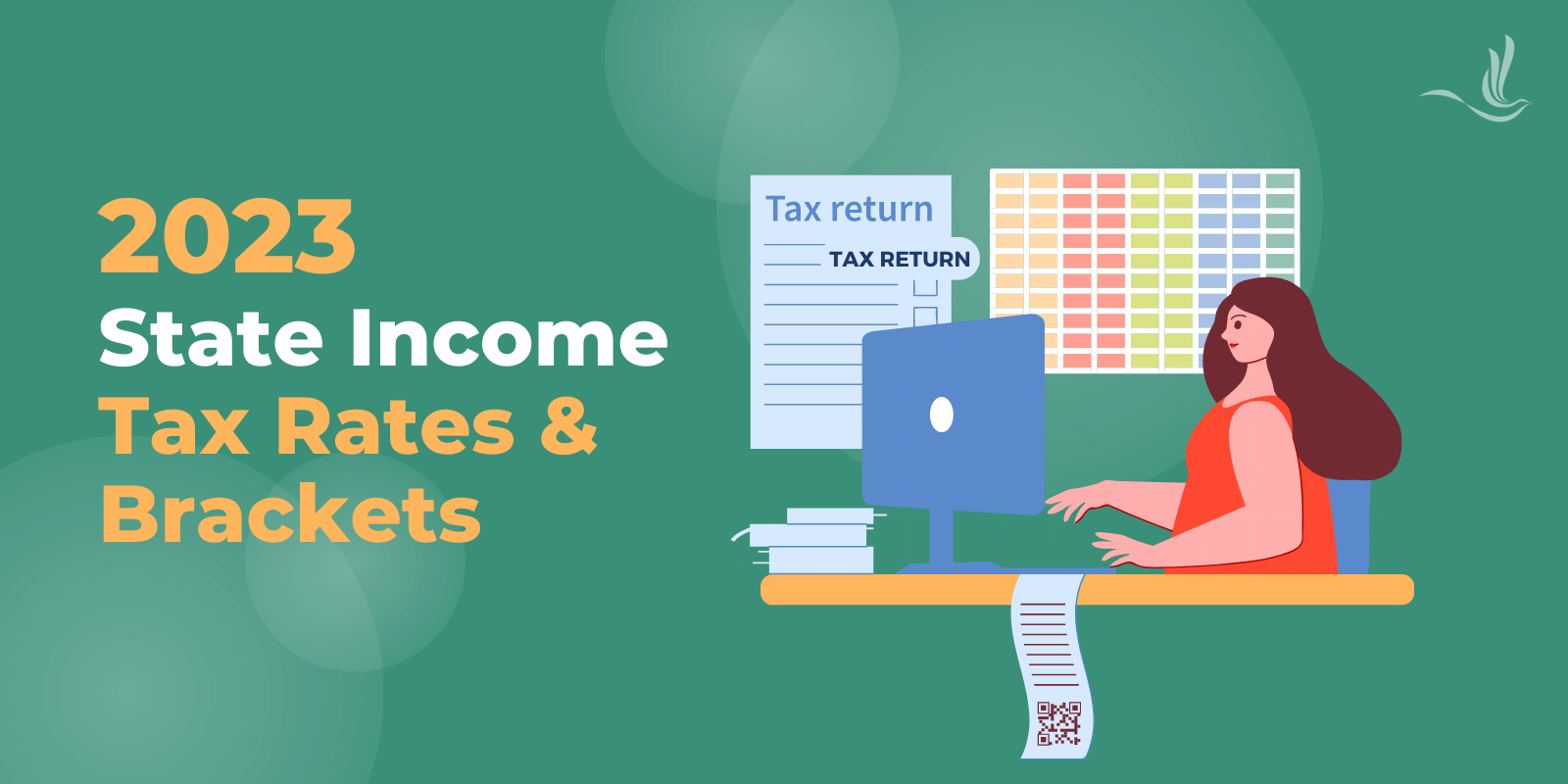
We often discuss federal taxes here, from tax filings to deductions and credits. However, it’s important to note that federal taxes are typically only one half of a taxpayer’s responsibility. In addition to filing and paying federal taxes each year, taxpayers must also stay on top of their state tax responsibilities if they have any. Here we will discuss the different types of state tax systems, as well as the 2023 state income tax rates and brackets.
State Tax Systems
Not every state taxes their residents the same. In fact, some states don’t tax at all. These states include Alaska, Florida, Nevada, South Dakota, Tennessee, Texas, Washington, and Wyoming. New Hampshire does not tax regular income, but it does have a 5% tax on dividend and interest income. All other states either use a flat tax system or a progressive tax structure.
Flat Tax System
The flat tax system is the simpler of the two and involves one tax rate for most types of income. The factor that could change state to state is which income is considered taxable. Some states alternatively tax according to AGI instead of taxable income. States that have a flat tax rate in 2023 are:
- Arizona – 2.5% of taxable income
- Colorado – 4.4% of taxable income
- Idaho – 5.8% of taxable income
- Illinois – 4.95% of taxable income
- Indiana – 3.15% of taxable income
- Kentucky – 4.5% of taxable income
- Michigan – 4.05% of taxable income
- New Hampshire – 4% on dividends and interest income only
- Pennsylvania – 3.07% of taxable income
- Utah – 4.65% of taxable income
Progressive Tax Structure
The remaining states use a progressive tax system, in which higher incomes are taxed at higher rates. In 2023, states that use a progressive tax system are:
| State | Tax Rates | Number of Brackets |
| Alabama | 2%-5% | 3 |
| Arkansas | 2%-4.9% | 3 |
| California | 1%-12.3% | 9 |
| Connecticut | 3%-6.99% | 7 |
| Delaware | 0%-6.6% | 7 |
| District of Columbia | 4%-10.75% | 7 |
| Georgia | 1%-5.75% | 6 |
| Hawaii | 1.4%-11% | 12 |
| Iowa | 4.4%-6% | 4 |
| Kansas | 3.1%-5.7% | 3 |
| Louisiana | 1.85%-4.25% | 3 |
| Maine | 5.8%-7.15% | 3 |
| Maryland | 2%-5.75% | 8 |
| Massachusetts | 5%-9% | 2 |
| Minnesota | 5.35%-9.85% | 4 |
| Mississippi | 0%-5% | 2 |
| Missouri | 1.5%-4.95% | 8 |
| Montana | 1%-6.75% | 7 |
| Nebraska | 2.46%-6.64% | 4 |
| New Jersey | 1.4%-10.75% | 7 |
| New Mexico | 1.7%-5.9% | 5 |
| New York | 4%-10.9% | 9 |
| North Dakota | 1.1%-2.9% | 5 |
| Ohio | 0%-3.99% | 5 |
| Oklahoma | 0.25%-4.75% | 6 |
| Oregon | 4.75%-9.9% | 4 |
| Rhode Island | 3.75%-5.99% | 3 |
| South Carolina | 0%-6.4% | 3 |
| Vermont | 3.35%-8.75% | 4 |
| Virginia | 2%-5.75% | 4 |
| West Virginia | 3%-6.5% | 5 |
| Wisconsin | 3.54%-7.65% | 4 |
Conclusion
Taxpayers should ensure that they stay on top of their state tax obligations as well as their federal. We often hear horror stories about what happens if the IRS begins to take collection action against you, but state tax agencies can be just as intimidating. Like the IRS, your state’s department of revenue can levy and penalize you. In addition, they can revoke or refuse to renew any state-issued licenses, including driver’s licenses and professional licenses you may need to operate a business. If you’re behind on your state taxes, Optima Tax Relief can help.
If You Need Tax Help, Contact Us Today for a Free Consultation